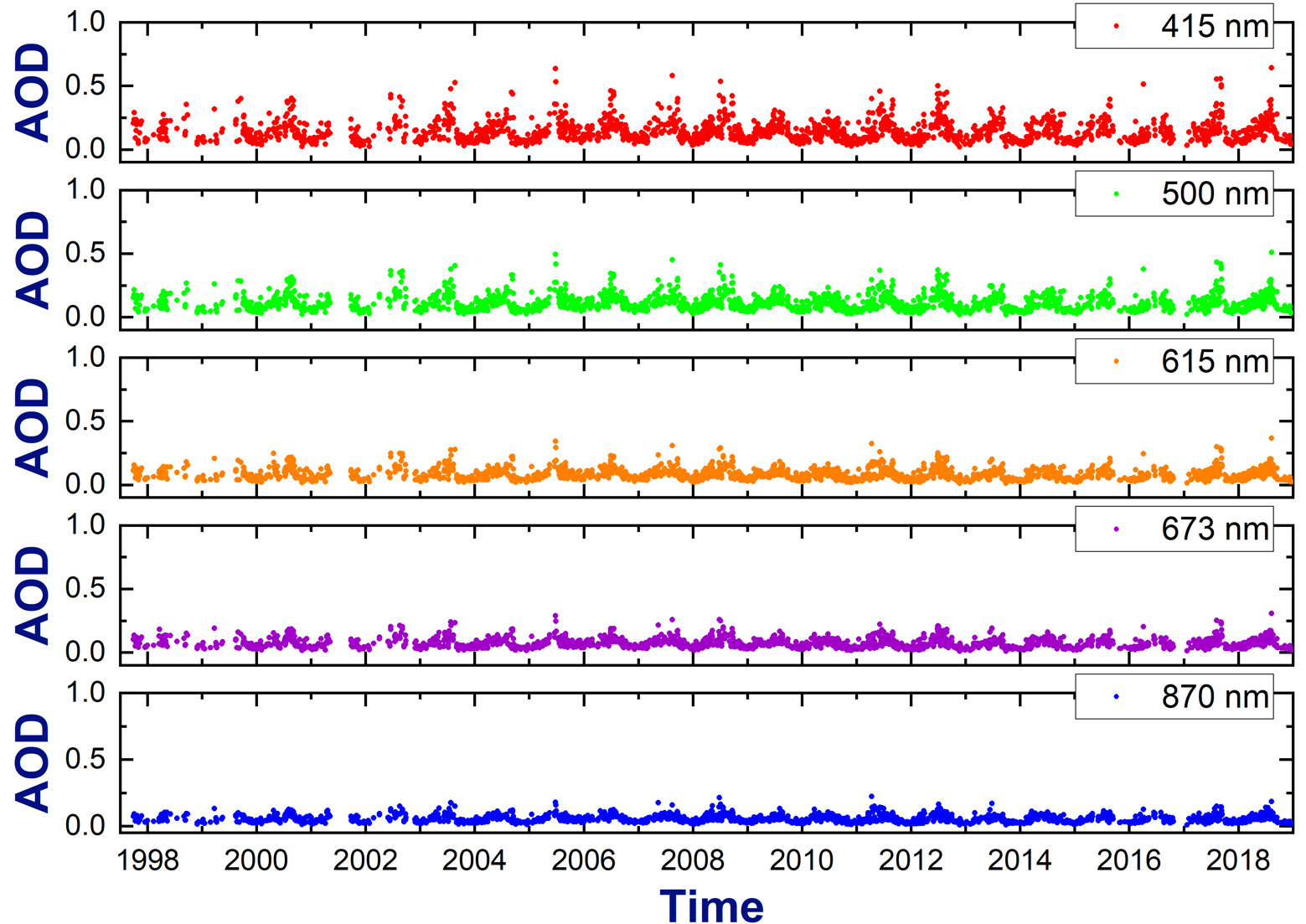Evaluate Aerosol Optical Depth Best Estimate Data Product
Published: 13 September 2023

New data are available from the Aerosol Optical Depth Best Estimate value-added product (AODBE VAP), previously known as Quality Control Aerosol Optical Depth (QCAOD). The VAP was renamed to better describe the data product.
AODBE combines individual AODs measured by four co-located instruments: two multifilter rotating shadowband radiometers, one normal incidence multifilter radiometer, and one Cimel sunphotometer. These instruments are deployed at the Atmospheric Radiation Measurement (ARM) user facility’s Southern Great Plains atmospheric observatory. The combined AOD at a given time and wavelength is calculated as the average of overlapped individual AODs. The VAP also provides uncertainty assessment of the combined and individual AODs.
The new AODBE 5-channel (AODBE5CH) product includes the combined and individual AODs and their uncertainties at five wavelengths (415, 500, 615, 673, and 870 nanometers). The product has been generated with high-quality, enhanced continuity and 1‑minute temporal resolution using temporal and spectral matching of the individual AODs.
Scientists can use the generated product to analyze variability of aerosol loading over multiple time scales and to demonstrate the importance of this variability in forcing climate change.
More information about AODBE5CH is available on the AODBE web page.
AODBE5CH data from January 15, 1997, to May 1, 2021, are ready to use now. Files are in netCDF format.
Access the new data in the ARM Data Center. (To download the data, create an ARM account.)
Feedback is requested to improve this evaluation product. If you have feedback or questions about the data, please contact AODBE’s lead developer, Gabe Gibler, or Evgueni Kassianov.
To cite the AODBE5CH data, please use doi:10.5439/1885158.
Keep up with the Atmospheric Observer
Updates on ARM news, events, and opportunities delivered to your inbox
ARM User Profile
ARM welcomes users from all institutions and nations. A free ARM user account is needed to access ARM data.


















